Speakers, whether built into your phone, laptop, or Bluetooth device, tend to collect dust, lint, and even moisture over time. This buildup can muffle audio, distort sound, or make it seem like your speaker is dying a slow, dusty death.
While most people instinctively reach for a toothpick or cotton swab, not everyone wants to mess with tiny grills or risk damaging the hardware.
That’s where online speaker cleaner tools come in: simple, sound-based solutions that require nothing more than your internet connection and a working speaker.
These tools play specific audio frequencies that can vibrate debris or moisture out of your speaker. It may sound odd at first, but they’re surprisingly effective for light cleaning.
In this guide, we’ll explore what they are, how they work, and which ones are worth trying.
What Is an Online Speaker Cleaner?
An online speaker cleaner is a web-based or app-based tool that plays specific sound frequencies designed to push out dust or water particles trapped inside your speaker grill.
These are often used when your phone speaker sounds muffled after exposure to moisture or debris.
Unlike physical cleaning methods, these tools don’t require opening your device or inserting anything into the speaker holes. They rely on the natural vibrations created by low and mid-frequency tones to shake out particles gently.
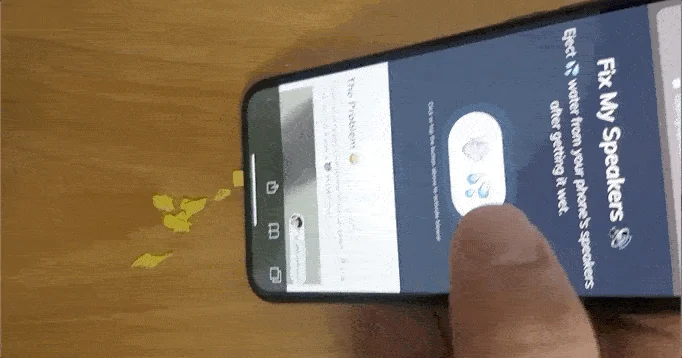
Most of these tools are completely free, and many of them work across devices, meaning you can use them on your phone, tablet, or even your laptop. They offer a hands-free, low-risk way to improve sound clarity when you suspect buildup or minor water damage.
However, they’re not a guaranteed fix for every speaker problem. Think of them more like a clever first aid step rather than a full-blown repair.
How It Works: The Science Behind It
Speakers work by vibrating a diaphragm to produce sound waves. When these vibrations hit the right frequency, they can physically agitate particles like dust or even move out tiny droplets of water clinging to the mesh or cones.
Online speaker cleaners tap into this principle by playing sweeping audio tones (usually between 100Hz and 300Hz) that cause enough controlled vibration to dislodge obstructions without causing harm.
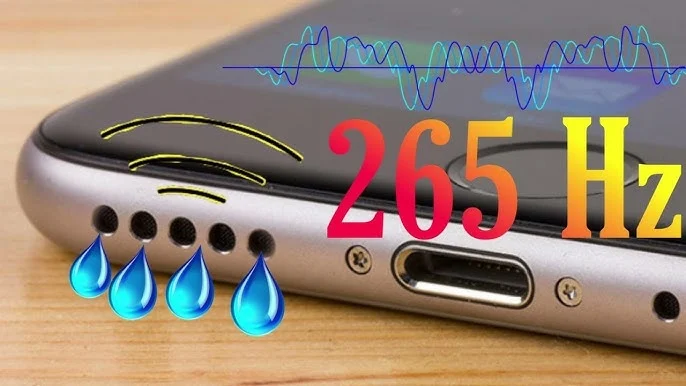
Lower frequencies tend to be more effective for moisture, while a broader range can help with dust. Some tools even alternate between frequencies rapidly to cover more ground.
The results can vary depending on your device’s speaker design, how much dirt is stuck inside, and whether the debris is dry or damp. Still, in many cases, users report a noticeable improvement after just a few runs of these cleaning sounds.
It’s simple science in action, and in the right scenario, it actually works.
Top Online Speaker Cleaner Tools
There are plenty of tools out there that promise to clean your speaker using sound, but not all are equally effective or user-friendly. Below are some of the most popular and trusted options you can try right from your browser or device.
FixMySpeakers
FixMySpeakers.com is one of the most widely used tools, especially after gaining popularity on social media. It plays a short, pulsing tone designed to eject water or light debris.
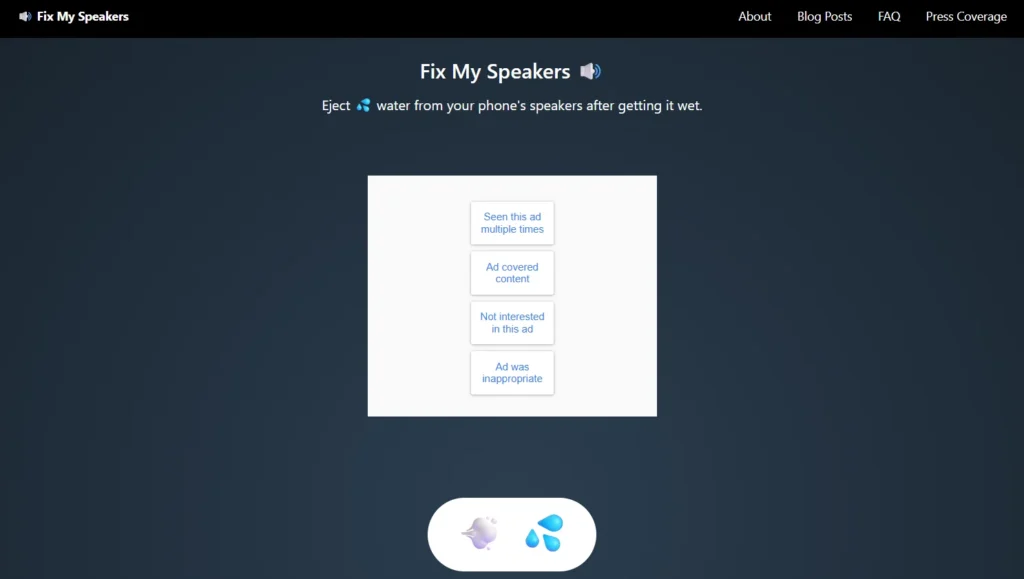
It’s extremely easy to use; just one click and the tone plays. The downside? It doesn’t let you control frequency range or duration. So, while it’s quick, it’s not very customizable.
OnlineToneGenerator
Online Tone Generator isn’t marketed strictly as a speaker cleaner, but it lets you generate any tone between 1Hz and 22,000Hz. By manually sweeping through low frequencies (around 100–300Hz), you can simulate the cleaning effect.
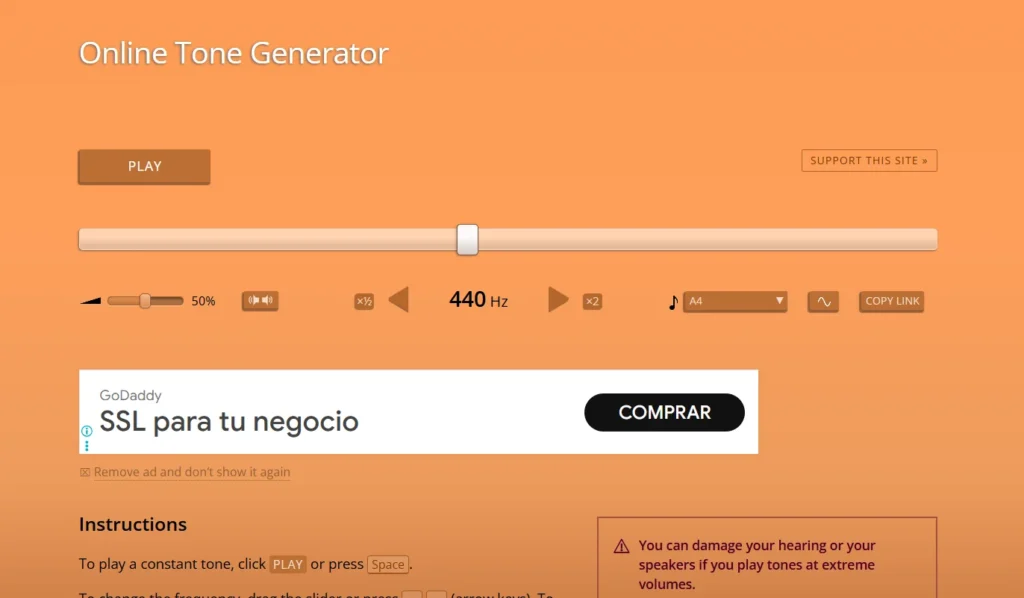
Its biggest strength is flexibility. However, beginners might not know which frequencies are most effective, and there’s no preset cleaning sound.
Water Eject
Water Eject is another app-style website that mimics the Apple Watch water ejection sound. It loops through tones meant to push moisture out gently.
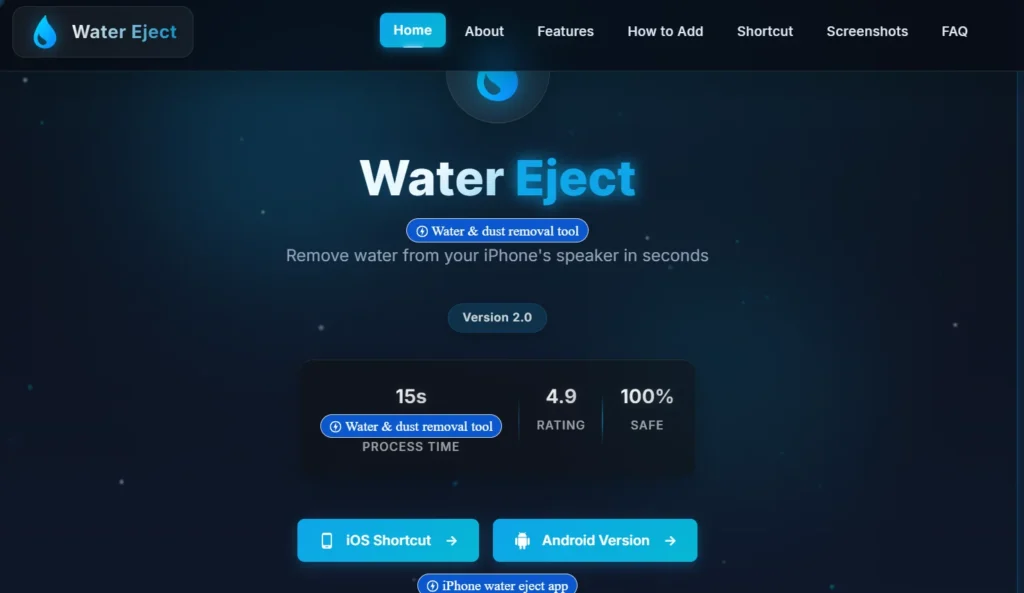
It’s free and easy to use, but again, it’s not adjustable. It’s great for quick fixes, but not ideal for stubborn debris.
Each of these tools has its strengths, so try one and, if it doesn’t help, move on to another. Some situations may respond better to a combination of tools.
Step-by-Step: How to Use These Tools Safely
Before running sound-based cleaning tones, follow these simple precautions to protect your speaker.
- Turn off any connected Bluetooth headphones or audio devices.
- Lower your device volume to around 50% before starting.
- Launch the tool of your choice in your browser or app.
- Slowly raise the volume if needed, but avoid maxing it out.
- Run the sound in 5–10 second intervals, pausing between each run.
- If moisture is involved, position the speaker grill facing downward.
- Stop immediately if you hear crackling, buzzing, or distortion.
- Dry the speaker area with a soft cloth afterward.
- Don’t run cleaning sounds more than a few times in a row.
Using these tools gently and mindfully can help clean your speakers without making things worse. Always monitor the sound quality during and after use.
When These Tools Work and When They Don’t
Sound-based speaker cleaning tools work best when your speaker is lightly clogged with dust or water. They’re especially handy right after exposure to moisture, like rain or splashes.
However, they can’t fix physical blockages like mud, thick dust buildup, or mechanical damage. If there’s zero improvement after a few attempts, it’s time to try manual methods or professional help.
Alternative and Manual Cleaning Methods
If sound alone doesn’t do the trick, manual cleaning may be necessary. Start by gently brushing the speaker grill with a dry, soft-bristled toothbrush. Avoid using metal or sharp tools.
You can also try compressed air, but use it in short bursts and at an angle to avoid forcing debris deeper inside. A microfiber cloth lightly dampened with isopropyl alcohol can help remove grime from outer surfaces.
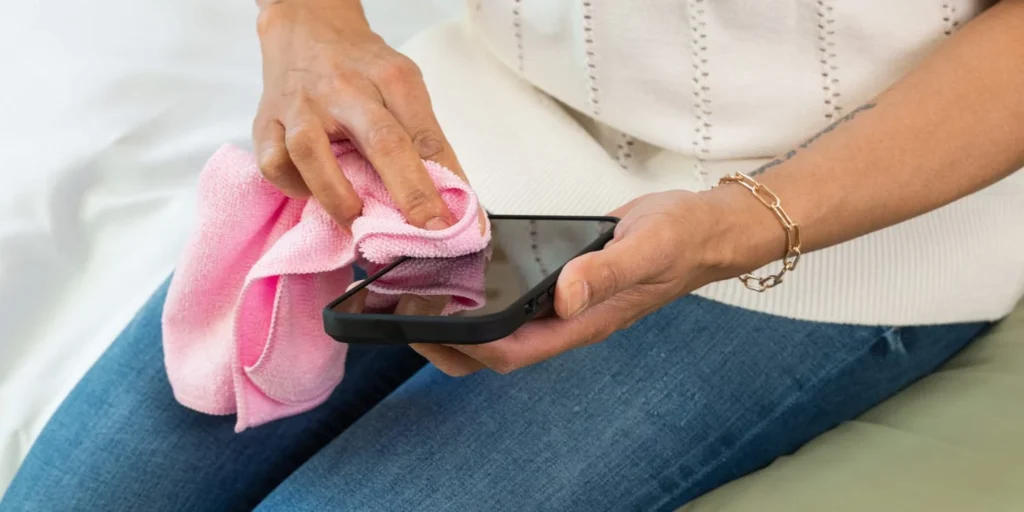
Avoid inserting anything into the speaker holes directly, as that could damage the diaphragm.
Preventive Measures to Keep Speakers Clean
Keeping your speakers clean isn’t just about fixing problems; it’s about preventing them.
- Use a protective phone case with port covers.
- Store your device in a clean, dry place when not in use.
- Avoid playing audio at high volumes in dusty environments.
- Clean the speaker grill once a week using a soft brush or cloth.
Good habits can save you a lot of trouble down the line.
Conclusion
Online speaker cleaner tools are clever and useful, but they’re not magic. Use them properly, follow up with manual cleaning when needed, and maintain your speaker’s health with care. Clean sound starts with clean habits.

